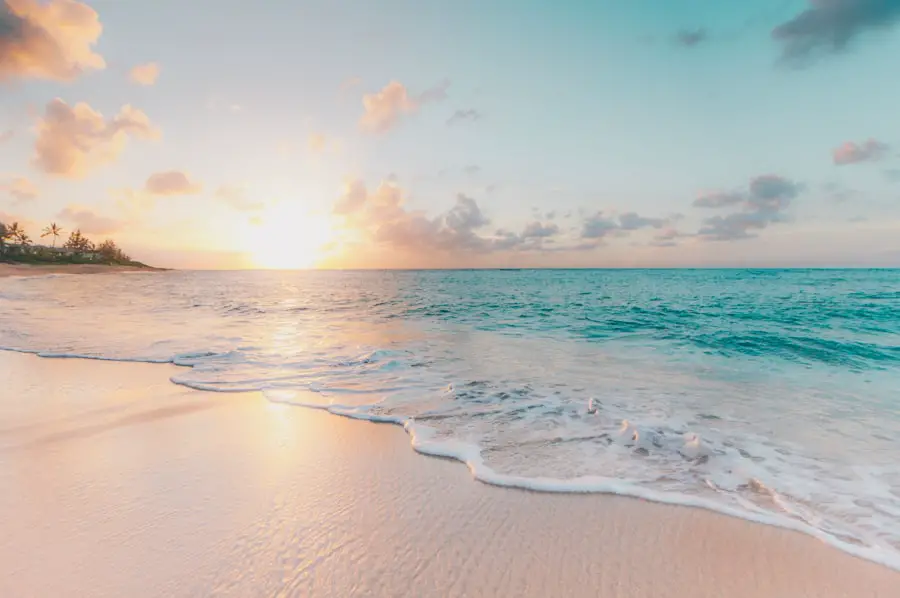Chile, a long and narrow country stretching over 4,300 kilometers along the western edge of South America, boasts a remarkably diverse climate that varies dramatically from north to south. This geographical diversity is influenced by the Andes Mountains to the east, the Pacific Ocean to the west, and the Atacama Desert in the north, which is one of the driest places on Earth. The climate ranges from the arid conditions of the north to the temperate rainforests of the south, creating a unique tapestry of ecosystems and weather patterns.
Understanding these climatic variations is essential for travelers seeking to experience the best of what Chile has to offer throughout the year. The northern region, characterized by its desert climate, experiences minimal rainfall and high temperatures during the day, while nights can be surprisingly cool. As one moves southward, the climate transitions into a Mediterranean pattern, with warm, dry summers and cool, wet winters.
Further down, in Patagonia, the weather becomes more unpredictable, with strong winds and frequent rain. This climatic diversity not only shapes the landscape but also influences the activities available in each region throughout the year. Whether one is drawn to the arid beauty of the Atacama Desert or the lush greenery of southern Chile, understanding the seasonal variations is crucial for planning an unforgettable adventure.
Key Takeaways
- Chile has a diverse climate, with different regions experiencing varying weather patterns throughout the year.
- Spring is the best time to explore Chile’s natural beauty, with blooming flowers and mild temperatures.
- Summer is ideal for enjoying Chile’s beaches and outdoor activities, with warm weather and longer daylight hours.
- Fall in Chile brings harvest festivals and wine tasting opportunities, as well as beautiful foliage in the countryside.
- Winter is the perfect time for skiing and snowboarding in the Andes, with many resorts offering excellent snow conditions.
Spring: The Best Time for Exploring Nature
Spring in Chile, which spans from September to November, is a season marked by renewal and vibrant natural beauty. As winter recedes, wildflowers bloom across various regions, painting the landscapes with a riot of colors. The central valleys come alive with blossoming fruit trees, particularly in places like the Casablanca Valley, known for its vineyards and orchards.
This is an ideal time for nature enthusiasts to explore Chile’s national parks, such as Torres del Paine or La Campana, where hiking trails are less crowded and wildlife is more active. The pleasant temperatures and longer daylight hours make it perfect for outdoor activities like trekking, birdwatching, and photography. In addition to its natural allure, spring also heralds a series of cultural events and festivals that celebrate Chilean heritage.
The Fiestas Patrias, or National Holidays, take place in mid-September but often extend into October with various local celebrations. These festivities showcase traditional music, dance, and cuisine, providing visitors with an authentic taste of Chilean culture. Spring is also an excellent time for wine lovers to visit vineyards in regions like Colchagua and Maipo Valley, where they can participate in grape harvest tours and tastings.
The combination of pleasant weather and cultural richness makes spring an exceptional time for exploring Chile’s diverse landscapes and vibrant communities.
Summer: Ideal for Beaches and Outdoor Activities

Summer in Chile runs from December to February and is synonymous with sun-soaked beaches and outdoor adventures. The coastal regions, particularly around Valparaíso and Viña del Mar, become bustling hubs for both locals and tourists seeking to escape the heat. With average temperatures ranging from 25°C to 30°C (77°F to 86°F), this season is perfect for enjoying water sports such as surfing, sailing, and swimming in the Pacific Ocean.
The beaches are lined with lively restaurants and bars that serve fresh seafood and local wines, creating a vibrant atmosphere that enhances the summer experience. Inland, summer offers a plethora of opportunities for hiking and exploring the stunning landscapes of the Andes Mountains. Popular trekking routes like the W Circuit in Torres del Paine National Park attract adventurers from around the globe.
The clear skies and mild temperatures make it an ideal time for camping under the stars or embarking on multi-day hikes through breathtaking scenery. Additionally, summer is a prime time for outdoor festivals celebrating music, art, and local culture. Events such as the Festival de Viña del Mar draw international artists and large crowds, showcasing Chile’s rich artistic heritage while providing entertainment against a backdrop of stunning coastal views.
Fall: Harvest Festivals and Wine Tasting
| Event | Date | Location | Activities |
|---|---|---|---|
| Harvest Festival 1 | October 5th | Vineyard A | Wine tasting, grape stomping, live music |
| Harvest Festival 2 | October 12th | Vineyard B | Wine tasting, pumpkin patch, hayrides |
| Wine Tasting Event 1 | October 19th | Vineyard C | Wine pairing, gourmet food trucks, vineyard tours |
| Wine Tasting Event 2 | October 26th | Vineyard D | Wine education seminars, artisanal cheese tasting |
As summer fades into fall from March to May, Chile transforms into a land of harvest celebrations and culinary delights. This season is particularly significant for wine enthusiasts as it marks the grape harvest period in many of Chile’s renowned wine regions. The Colchagua Valley and Maipo Valley come alive with festivities celebrating the bounty of the vineyards.
Visitors can partake in grape stomping events, vineyard tours, and tastings that highlight the rich flavors of Chilean wines. The fall harvest festivals not only showcase local wines but also feature traditional foods that reflect Chile’s agricultural heritage. In addition to wine-related activities, fall offers a unique opportunity to experience Chile’s stunning landscapes as they change color with the season.
The foliage in places like Parque Nacional Vicente Pérez Rosales takes on vibrant hues of red and gold, creating picturesque settings for hiking and photography. The milder temperatures make it comfortable for outdoor exploration without the summer crowds. Moreover, cultural events such as Día de las Glorias del Ejército (Army Day) on September 19th provide insight into Chile’s history and traditions through parades and public celebrations.
Fall is a time when visitors can immerse themselves in both nature’s beauty and Chilean culture while enjoying some of the best culinary experiences the country has to offer.
Winter: Skiing and Snowboarding in the Andes
Winter in Chile spans from June to August and presents a completely different side of this diverse country. The Andes Mountains become a winter wonderland during these months, attracting ski enthusiasts from around the world. Renowned ski resorts such as Valle Nevado and La Parva offer excellent conditions for skiing and snowboarding, with well-groomed slopes catering to all skill levels.
The proximity of these resorts to Santiago makes them easily accessible for day trips or extended stays in cozy lodges that provide breathtaking mountain views. Beyond skiing, winter in Chile also offers unique opportunities for adventure sports such as snowshoeing and ice climbing. The stunning landscapes blanketed in snow create a magical atmosphere that draws visitors seeking both adrenaline-pumping activities and serene winter scenery.
Additionally, winter is an excellent time to explore Chile’s geothermal wonders in places like Pucon or Termas de Chillán, where hot springs provide a relaxing contrast to the chilly mountain air. The combination of thrilling winter sports and tranquil natural hot springs makes this season an appealing choice for those looking to experience Chile’s diverse offerings.
Shoulder Seasons: Off-Peak Travel Opportunities

The shoulder seasons—spring (September to November) and fall (March to May)—present unique advantages for travelers seeking a more tranquil experience in Chile. During these periods, tourist crowds are significantly reduced compared to peak summer months, allowing visitors to explore popular destinations without long lines or overcrowded attractions. This is particularly beneficial for those looking to enjoy national parks like Torres del Paine or Los Glaciares at a leisurely pace while fully immersing themselves in nature.
Moreover, traveling during shoulder seasons often results in more favorable pricing on accommodations and tours. Many hotels and tour operators offer discounts or special packages during these times to attract visitors. This affordability allows travelers to indulge in experiences that might be out of reach during peak seasons—such as guided tours through remote areas or stays at luxury lodges—making it an opportune time for budget-conscious adventurers.
Additionally, shoulder seasons provide a chance to witness local life more authentically as communities engage in seasonal activities like harvest festivals or springtime celebrations.
Considerations for Visiting Easter Island
Easter Island (Rapa Nui), located over 3,500 kilometers off the coast of mainland Chile, is one of the most remote inhabited islands in the world. Its unique culture and archaeological significance make it a must-visit destination for many travelers. However, visiting Easter Island requires careful planning due to its isolation and limited resources.
The best time to visit is during its summer months (December to February), when temperatures are warmest and rainfall is minimal. This period coincides with various cultural festivals that celebrate Rapa Nui traditions. Travelers should also consider flight availability when planning their trip to Easter Island; flights from Santiago are limited and can fill up quickly during peak tourist seasons.
Accommodations on the island range from budget hostels to luxury resorts but can be scarce during high season; thus, booking well in advance is advisable. Additionally, understanding local customs and respecting sacred sites is crucial when visiting this culturally rich destination. Engaging with local guides can enhance the experience by providing insights into Rapa Nui history and traditions while ensuring respectful exploration of its archaeological wonders.
Choosing the Best Time for Your Chilean Adventure
When planning a trip to Chile, understanding its diverse climate and seasonal offerings is essential for crafting an unforgettable experience tailored to individual interests. Whether one seeks adventure in the snow-capped Andes during winter or wishes to bask on sun-kissed beaches in summer, each season presents unique opportunities for exploration and enjoyment. Spring’s blooming landscapes invite nature lovers to immerse themselves in vibrant ecosystems while fall’s harvest celebrations delight foodies and wine enthusiasts alike.
Ultimately, choosing the best time for your Chilean adventure depends on personal preferences regarding weather conditions, activities desired, and cultural experiences sought. By considering these factors alongside regional highlights throughout the year, travelers can ensure their journey through this captivating country is filled with memorable moments that reflect its rich natural beauty and cultural heritage.
FAQs
What is the best time to travel to Chile?
The best time to travel to Chile is during the spring (September to November) and fall (March to May) seasons. These months offer mild weather and fewer crowds, making it an ideal time to explore the country.
What is the weather like in Chile during the best time to travel?
During the spring and fall seasons, the weather in Chile is mild and comfortable. Temperatures are generally pleasant, and there is less rainfall compared to the winter and summer months.
Are there any specific events or festivals to consider when planning a trip to Chile?
Chile hosts several festivals and events throughout the year, but some notable ones during the best time to travel include the National Holidays in September and the Grape Harvest Festival in March. These events offer a unique cultural experience for travelers.
What are the popular tourist destinations to visit in Chile during the best time to travel?
Some popular tourist destinations to visit in Chile during the best time to travel include Santiago, Valparaiso, Torres del Paine National Park, Atacama Desert, and the Lake District. These locations offer a diverse range of attractions and activities for visitors.
Are there any travel considerations to keep in mind when visiting Chile during the best time to travel?
When visiting Chile during the best time to travel, it’s important to book accommodations and tours in advance, especially for popular destinations. Additionally, it’s advisable to pack layers of clothing to accommodate the fluctuating temperatures in different regions of the country.
